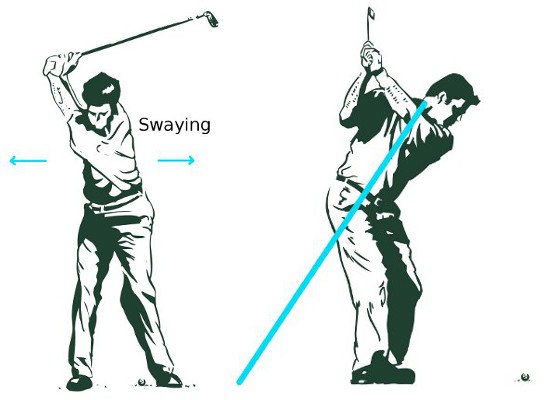
Sway – Swaying
Golf is a game of skill, precision, and balance. One of the key elements to a consistent and powerful golf swing is maintaining a stable and centered position throughout the entire swing. Swaying is a common mistake that many golfers make, which can lead to inconsistent ball striking and loss of power. In this article, we will explore the term “Sway – Swaying” in golf, its causes, effects, and how to fix it.
- What is Swaying?
- Causes of Swaying
- Incorrect weight distribution: If your weight is not properly balanced between your feet at address, it can lead to swaying during the swing.
- Lack of core stability: Weak core muscles can contribute to swaying as it becomes difficult to maintain a stable base.
- Overactive lower body: Engaging the lower body too aggressively can cause excessive lateral movement, leading to swaying.
- Poor setup position: Incorrect posture, such as standing too upright or leaning too far back, can make it challenging to stay centered throughout the swing.
- Effects of Swaying
- Loss of power: Swaying causes weight transfer away from the target, resulting in a weaker and less efficient swing.
- Inconsistent ball striking: When your body is moving laterally during the swing, it becomes difficult to strike the ball consistently.
- Lack of balance: Swaying can create balance issues, leading to poor weight transfer and potential loss of stability.
- Difficulty with shot shaping: Controlling the path and face angle of the club becomes challenging when the body is swaying inconsistently.
- How to fix Swaying
- Proper setup: Ensure you have a balanced and athletic stance with your weight evenly distributed between your feet.
- Engage your core: Strengthening your core muscles will enhance stability and reduce lateral movement.
- Focus on the hips: During the swing, concentrate on keeping your hips centered and stable.
- Practice with a mirror: Use a full-length mirror to monitor your swing and check for any excessive lateral movement.
- Slow and steady: Practice slow-motion swings to develop a feel for a centered swing with minimal sway.
Swaying refers to the lateral movement of the hips away from the target during the backswing or downswing. It can also involve excessive movement of the lower body, such as the upper body shifting laterally away from the target or a significant lateral shift of the head.
Swaying can have several negative effects on your golf swing:
Addressing and fixing swaying requires practice and conscious effort. Here are some tips to help you eliminate swaying from your swing:
Awareness of swaying and consistent practice will help you develop a more stable and powerful golf swing. Remember to maintain a balanced and centered position throughout the swing, and you'll be on your way to improving your game.





